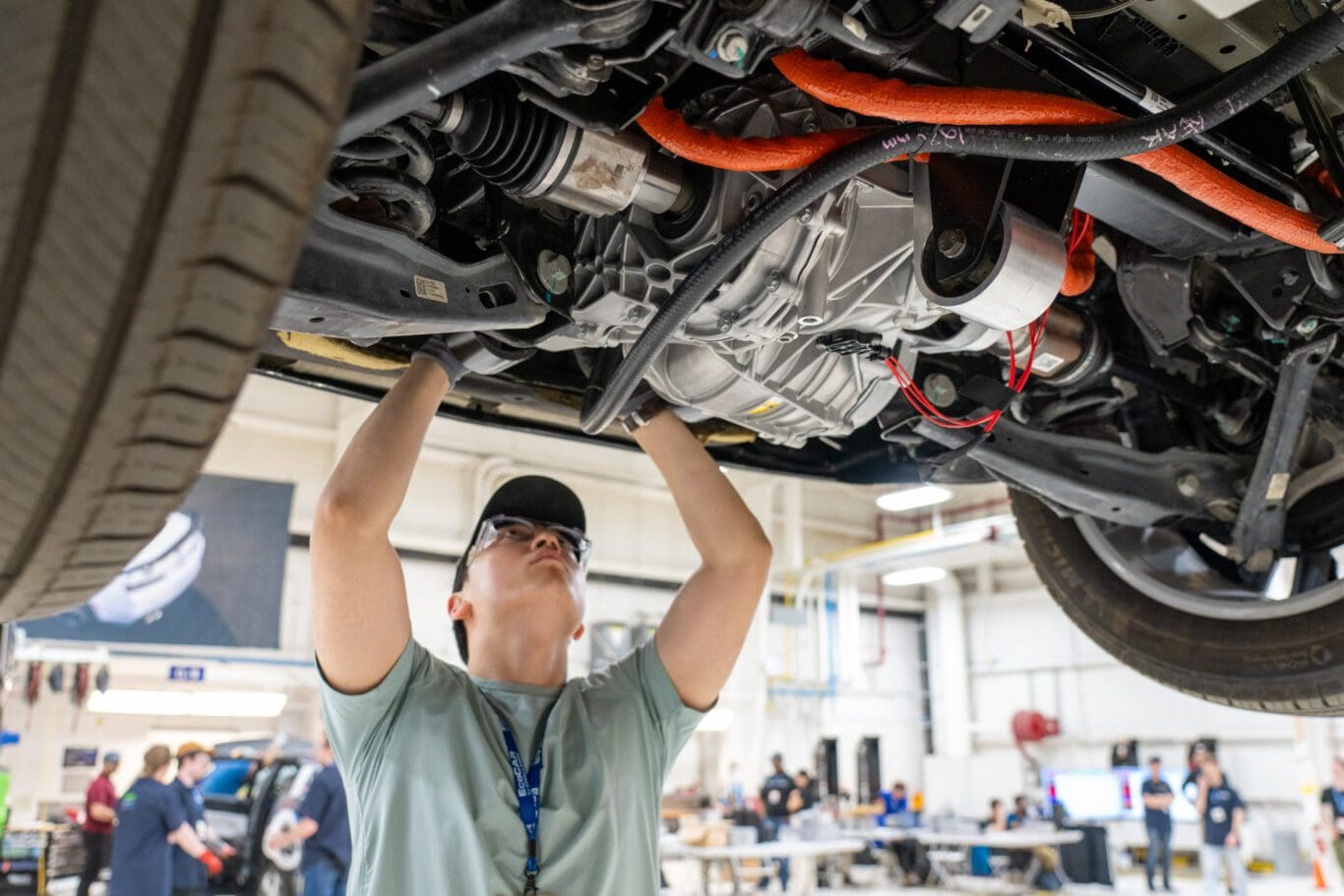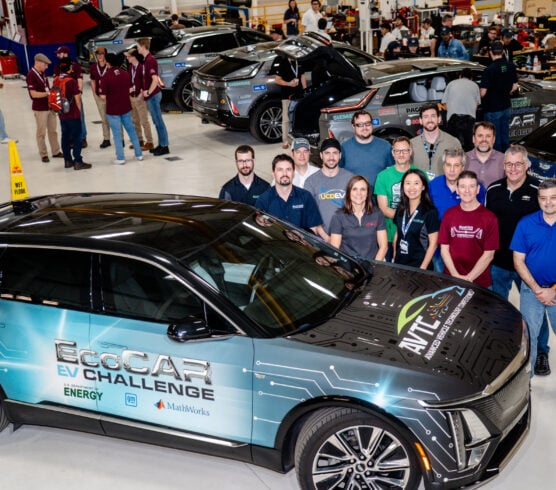
As the EcoCAR EV Challenge enters its third year, teams are ramping up their efforts to innovate, collaborate, and overcome new challenges. Year 3 marks a pivotal point in the competition, where early groundwork is translated into tangible results, and teams begin to see their hard work come to fruition. Each subteam is honing their focus, refining strategies, and setting ambitious goals that will not only shape their performance this year but also lay the foundation for success in the final year of the competition. Year 3 is all about pushing boundaries and making a meaningful impact both on and off the road.
Project Management, Mobility Challenge, and Communications
In Year 3, the Project Management, Mobility Challenge, and Communications subteams are playing critical roles in shaping the EcoCAR competition’s trajectory. Each subteam’s efforts are aimed at improving processes, enhancing community engagement, and increasing project visibility. Their work lays the foundation for both immediate success and long-term impact, addressing key areas such as project execution, stakeholder engagement, and community outreach.
The Project Management subteam is focused on enhancing their project management practices to ensure effective execution of the competition. Their efforts include refining task management tools and methodologies to boost productivity and control over project deliverables. This year, the team is also prioritizing improved team dynamics, establishing processes that foster collaboration and motivation. Key initiatives include implementing structured feedback mechanisms, such as 360-degree reviews and anonymous surveys, and developing concise reports and presentations to communicate project outcomes to stakeholders. Additionally, proactive risk management practices are being adopted to identify and mitigate potential challenges, ensuring steady progress and a solid foundation for Year 4.
The Mobility Challenge subteam is dedicated to addressing mobility barriers for local community members. The subteam includes a Community Challenge track and a Design Challenge track. The Community Challenge track, involves collaborating on mobility-related projects that address specific needs within the community. The Design Challenge track focuses on developing prototypes that enhance the usability of the Cadillac LYRIQ to overcome personal mobility limitations. By actively engaging with the community, students are learning how to engage with community stakeholders, conduct a user-centric design process, and evaluate the impacts of their efforts.
The Communications subteam is working to increase the visibility and impact of the EcoCAR project, both online and in their local communities. Their activities include organizing outreach events supporting the Advanced Vehicle Technology Competition (AVTC) mission of increasing STEM literacy and interest in STEM careers with local underserved youth. Communications Managers will also promote the benefits of electric vehicles (EVs) and team accomplishments by blogging and crafting engaging videos for social media. This year, their focus on highlighting the student-sponsor partnership and the broader impact of EcoCAR’s work is crucial for building support and awareness within the community and among supporters.

Connected and Automated Vehicles, Propulsion Controls and Modeling, and System Design and Integration
As the competition advances into its third year, the Connected and Automated Vehicles (CAV), Propulsion Controls and Modeling (PCM), and System Design and Integration (SDI) subteams are making significant strides in their technical focus areas. Their work involves developing and testing innovative technologies, optimizing vehicle performance, and ensuring comprehensive system integration. These efforts are crucial for achieving high performance and reliability in the competition’s final stages.
The Connected and Automated Vehicles (CAV) subteam is concentrating on developing and deploying control algorithms for key features such as cooperative adaptive cruise control (CACC) and longitudinal automatic intersection navigation (AIN). The subteam is establishing robust software deployment processes to prepare for on-vehicle testing. They are also continuing to develop and refine their longitudinal and lateral features in simulation, with a primary focus on CACC and AIN. By spring, the CAV subteam aims to test these features on the vehicle, ensuring their functionality and performance at the California Air Resource Board (CARB) testing facility during the Year 3 Winter Workshop and Vehicle Testing Event. Additionally, they are working on enhancing the human-machine interface (HMI) and driver monitoring system (DMS) to improve driver interaction and safety.
The Propulsion Controls and Modeling (PCM) subteam is focused on developing and optimizing propulsion controls to drive the vehicle efficiently. Utilizing MathWorks’ Simulink and Speedgoat, the PCM subteam is designing software to translate driver input into precise torque delivery at the wheels. This involves extensive real-time testing and refinement to ensure smooth operation and energy efficiency. A major milestone for the year is preparing the vehicle for energy consumption assessments, with a goal of having a fully functional prototype ready for evaluation at the CARB event. The experience gained in software development, system safety, and in-vehicle testing is crucial for preparing students for future roles in automotive engineering.
The System Design and Integration (SDI) subteam is transitioning from vehicle integration to a focus on comprehensive testing and calibration. Early in the year, the SDI subteam is wrapping up integration tasks and developing a detailed testing matrix to validate various systems, including mechanical, electrical, and thermal components. As the year progresses, the focus shifts to testing and calibrating the vehicle, refining torque path and energy management controls to enhance drivability. Students gain hands-on experience with industry-standard tools and testing procedures, including dynamometer testing at CARB’s facility. This thorough testing and calibration process is essential for identifying and addressing potential issues, setting the stage for further development in Year 4.

Gearing up for the Road Ahead:
The dedication and hard work demonstrated across Project Management, Communications, Mobility Challenge, Connected and Automated Vehicles, Propulsion Controls and Modeling, and System Design and Integration reflect the true spirit of the EcoCAR competition—pushing the boundaries of what’s possible in advanced vehicle technology while making a positive impact on society. As these teams move closer to the final year of the competition, the foundations laid in Year 3 will be instrumental in driving their continued success. With a strong focus on sustainability and technological innovation, the students involved in EcoCAR are poised to lead the way in the future of transportation.
Written by: Riddhi Puranik



